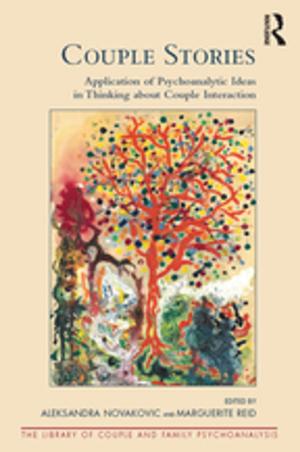| Author: | Aron Gersh | ISBN: | 9780951611715 |
| Publisher: | Aron Gersh | Publication: | December 29, 2016 |
| Imprint: | Smashwords Edition | Language: | English |
| Author: | Aron Gersh |
| ISBN: | 9780951611715 |
| Publisher: | Aron Gersh |
| Publication: | December 29, 2016 |
| Imprint: | Smashwords Edition |
| Language: | English |
If you have ever wondered why some seemingly great romances (of famous people, or very ordinary folk, or indeed your own) end up falling apart at the seams, and what seemed like the promise of a great and enduring love turns into a wounded, conflict-ridden separation or divorce, this book should help explain why.
Falling for Love suggests that when we get involved in romantic love, we are like people watching a performance of a magic trick, or grand illusion. Things appear to happen magically, because the real cause of what we see as happening is hidden somewhere, out of view. If we could see the real hidden cause, the magic would disappear. The magic of romantic love is based, I suggest, on hidden psychodynamic processes in us.
For the romantic lovers, all the problems of life currently seem solved, of course. But others, older and wiser perhaps, know that the real issues of relationships will arise and have to be faced eventually. Society generally, and expert relationship psychotherapists know this only too well. Yet society, as well as the experts, fails to ascribe anything problematic about the romantic phase itself. They welcome and delight in lovers, and wait in the wings for the hidden problems to reveal themselves later.
This book adds a perspective which I believe is unique in any literature about romantic love. It validates the popular views about what is hidden by romantic bliss and what will appear later. But crucially, it suggests we need to look at the problems inherent already in the romantic period of extreme bliss.
It suggests to lovers:
“Falling in love? Perhaps you need to consider the following . . . “
The suggestion is that there are a variety of fantasy elements active when we fall in love, and that it is worthwhile to be aware of them, and thus of the potential illusions they create in us, so that we can move toward becoming less regressed, more mature and authentic lovers, loving each other as real persons, not fantasies of perfection we create in our imaginations about our partners. As such, this is not a book cynical about love, but an attempt to inspire us toward a more true, a more authentic way of being in love.
If you have ever wondered why some seemingly great romances (of famous people, or very ordinary folk, or indeed your own) end up falling apart at the seams, and what seemed like the promise of a great and enduring love turns into a wounded, conflict-ridden separation or divorce, this book should help explain why.
Falling for Love suggests that when we get involved in romantic love, we are like people watching a performance of a magic trick, or grand illusion. Things appear to happen magically, because the real cause of what we see as happening is hidden somewhere, out of view. If we could see the real hidden cause, the magic would disappear. The magic of romantic love is based, I suggest, on hidden psychodynamic processes in us.
For the romantic lovers, all the problems of life currently seem solved, of course. But others, older and wiser perhaps, know that the real issues of relationships will arise and have to be faced eventually. Society generally, and expert relationship psychotherapists know this only too well. Yet society, as well as the experts, fails to ascribe anything problematic about the romantic phase itself. They welcome and delight in lovers, and wait in the wings for the hidden problems to reveal themselves later.
This book adds a perspective which I believe is unique in any literature about romantic love. It validates the popular views about what is hidden by romantic bliss and what will appear later. But crucially, it suggests we need to look at the problems inherent already in the romantic period of extreme bliss.
It suggests to lovers:
“Falling in love? Perhaps you need to consider the following . . . “
The suggestion is that there are a variety of fantasy elements active when we fall in love, and that it is worthwhile to be aware of them, and thus of the potential illusions they create in us, so that we can move toward becoming less regressed, more mature and authentic lovers, loving each other as real persons, not fantasies of perfection we create in our imaginations about our partners. As such, this is not a book cynical about love, but an attempt to inspire us toward a more true, a more authentic way of being in love.















